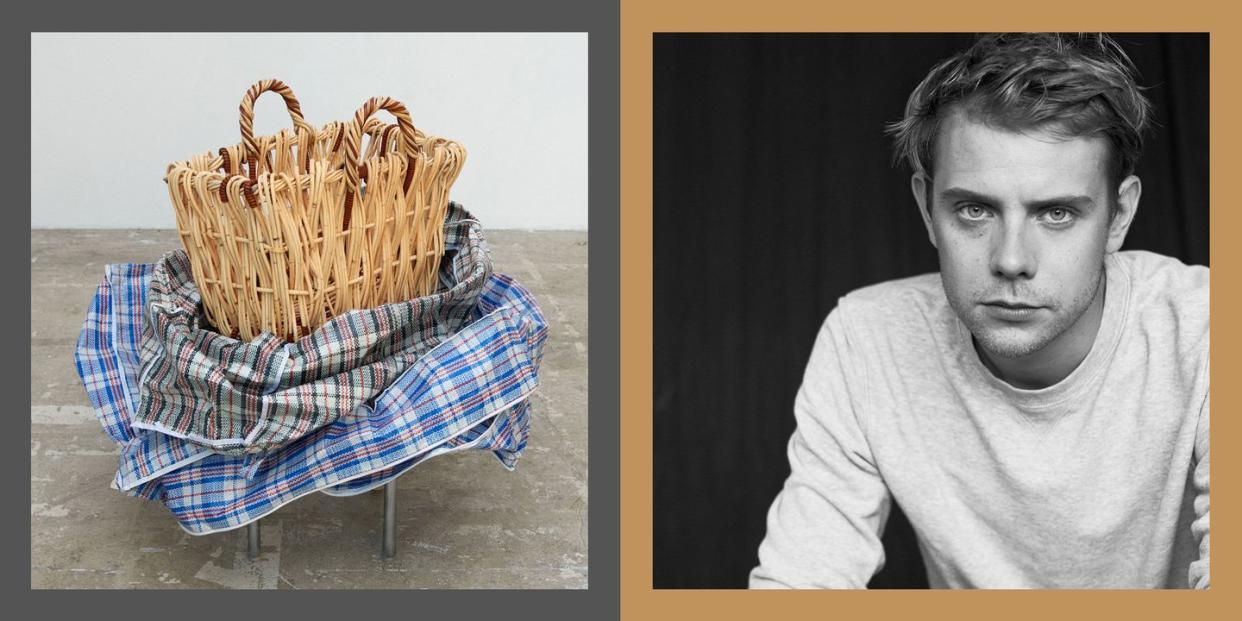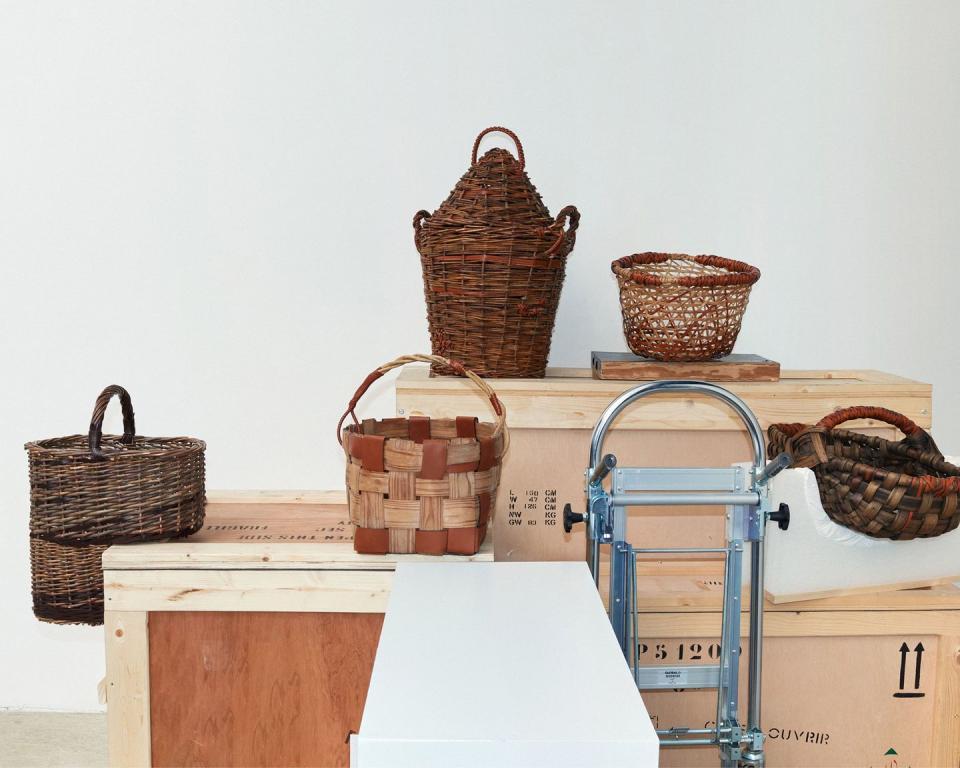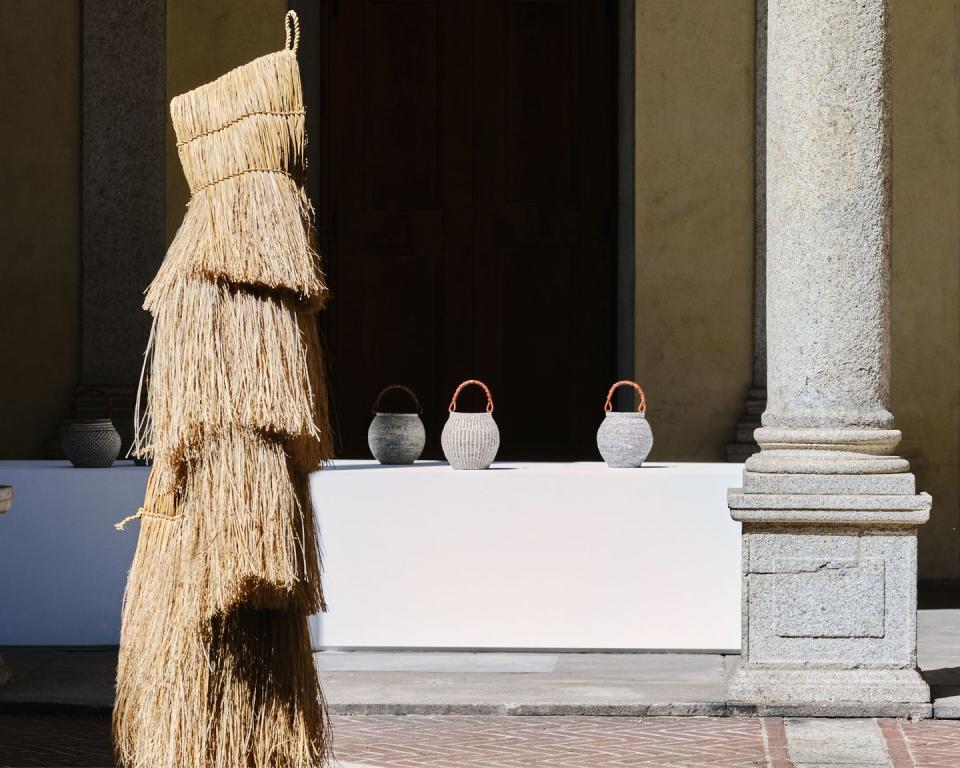Are Baskets a Luxury Item? Of Course They Are—Here’s Why

"Hearst Magazines and Yahoo may earn commission or revenue on some items through these links."
After a two-year pause, Loewe returned this year to Salone del Mobile to showcase “Weave, Restore, Renew,” a project dedicated to the regenerative power of handiwork. The crux of the installation, held at Milan’s Palazzo Isimbardi, explores a trio of techniques: leather weaving; the Galician straw-weaving tradition known as coroza; and the Korean paper-weaving technique jiseung. The core section, “Repaired in Spain,” comprises 240 baskets that were given to a series of artisans to mend and restore using leather string, resulting in a collection of one-of-a-kind objects. ELLE DECOR caught up with the brand’s creative director, Jonathan Anderson, to chat about luxury, craft, and the importance of preservation.

ELLE DECOR: So how big is your basket collection, and do you have a favorite?
Jonathan Anderson: At one point I had a lot, mainly by Rokansai [a Japanese basket weaver]. My favorite uses one of the most important techniques he pioneered in the 1920s, where you take a singular piece of a bamboo shoot, and you fold it and you tie it, and then it goes on the wall for ikebana. It looks like it could be made today or in the future. It’s one of the hardest things to find because they usually crack and you have to look after them a lot. I remember seeing one at a Japanese museum of art, and I just thought it was so simplistic, modern...it could be furniture, it could be craft, it could be design, it could be art. And it’s still, to this day, a [technique] that people reinterpret. It’s the hardest thing—to be able to bend this thing without cracking it.
ED: For a luxury brand like Loewe, how can a craft practice inform and evolve your industrialized processes?
JA: What we kind of forget sometimes is that your industrialized bag is fundamentally people. What this project has been able to do is highlight this aspect: that as much as our society has grown, it is impossible for us to fully fabricate a bag from scratch without any human contact. When we do these projects you start to realize that when you make a handle, for example—we do a lot of these sort of handmade spiral handles—no matter how you industrialize it, it never really works, because it never really feels the same. You need these imperfections to make it feel real. Even hiring people to make bags is very complicated because it is something it takes years to work out how to do.

ED: That leads into another question, about the idea of renewal and the way it pertains to preservation—not just of these physical objects that you hope have a long shelf life, but also of these learned techniques. How do you see this project pushing forward these two elements of renewal?
JA: If you look at, for example, kintsugi—Japanese porcelain repair using gold or silver or different resins—what you’re doing is a kind of embellishment. There’s something that I like in this process where you are reinventing something, but ultimately you are a conservator. And for me what this does is recontextualize and reshowcase the actual work that’s already in the object. A lot of [weaving] techniques are very difficult, and sometimes even the actual reeds just don’t grow in the same way today that they used to. That gives it this element of romance that is very hard to come by because it’s ultimately time that does that.
ED: Right—when you live with a piece for a while and it starts to reflect that. But why baskets? What was the starting point for using them as a vehicle to express these ideas around process and detail?
JA: Loewe has all of these factories and artisans that are making some of the best baskets in the world, and I wondered, How do we put this into a luxury brand? When we first started doing it seven years ago, there was a lot of pushback from the market. But what this exhibition shows is that baskets are made globally and they’ve been made for millennia—these are some of the earliest forms of bag shapes. If you were in Peru, Chile, China, or Scotland, the south of France or Galicia, they all have their own type of language within the basket. It’s very interesting to see a Chinese basket and a Japanese basket and how massively they differ, in terms of make.
ED: So it’s about preserving a world history as much as the material itself.
JA: This project has taken us two years because a lot of the materials that we are using in it have to be grown by the person who is going to weave it. And to be able to do that inside a luxury brand is very important.
ED: What is the significance of presenting it specifically in the design context of Salone del Mobile?
JA: I’ve worked in Milan for many, many years and for different brands, and I always quite enjoy this moment because it’s not reliant on fashion. There’s a different mix of people, and it feels a lot more relaxed. You can explain more. Most collections I work on are six months; this one has taken us two years. And we’ve had an entire team of people who have only been working on this, globally sourcing baskets, finding the right artisan to fix the basket and grow the right thing. Sometimes I think these things can be kind of over-luxurified, but the whole point of this exercise is that luxury has to change its approach. You cannot present this idea of “uniqueness” and “craft” if it’s just a mass-produced product, anyway.
ED: You do seem to have a dedication to unpacking for the consumer how the thing winds up as that end product. It’s not just about the destination—it’s the journey.
JA: Exactly. Or, for example, when you take a basket and then you arrange flowers in it, it becomes this other thing. It’s a renewal—you take an object and you reinvent it. By putting flowers in it or putting it on a shelf or beside your favorite book or whatever, it becomes this other creative exercise. And this is what I find fascinating about objects in general.
This interview has been edited and condensed for clarity.
You Might Also Like

